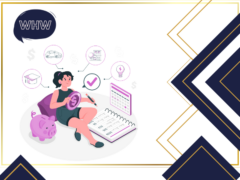Identity fraud protection: best practices and services to protect you from theft

Imagine sipping your morning coffee, scrolling through emails, and suddenly stumbling across a notification that your credit score has taken an unexpected dive.
This scenario unfortunately, isn’t just a bad start to your day, it could signal that your personal information has fallen into the wrong hands.
Identity theft isn’t just a breach of your financial details; it strikes at the core of your personal life and can leave lasting scars. That’s why identity fraud protection is essential.
In this guide, we’ll walk through robust strategies to shield your personal data and discuss what steps to take if your Social Security Number Stolen. We’ll also explore how identity theft check tools can be a part of your everyday arsenal against identity thieves.
So, let’s delve into how to prevent identity theft and ensure that your personal and financial integrity remains intact.
Understanding identity theft
Understanding identity theft means recognizing it as more than just a financial threat—it invades your personal life. This occurs when someone unlawly accesses your personal details—like your name, social security number, or credit card numbers—and uses them without your permission, typically to commit fraud.
Thieves can steal your identity in simple ways: through lost wallets, rummaging through your trash for bills, or intercepting mail for credit card offers. Online, they deploy phishing scams on fake websites to capture your sensitive information.
Additionally, they might use skimmers on ATMs or malware to spy on your digital activities and snatch data directly from your devices. Social media also provides personal details for thieves to exploit.
Understanding these tactics is crucial for identity fraud protection, equipping you to protect your personal and financial integrity.
Key ID fraud protection measures
Protecting yourself against identity theft means proactively engaging in ID fraud protection.
Here are straightforward yet powerful strategies to safeguard your personal information.
- Personal data management: the first defense
Be cautious about sharing your personal details, especially on unfamiliar websites or in response to unsolicited requests. Verify the security of platforms where you input sensitive information to avoid falling prey to phishing attempts.
- Robust passwords: digital keys
Utilise strong, unique passwords for each of your accounts. A password manager can assist in generating and securely storing these passwords, reducing the hassle of remembering multiple complex combinations. Regular updates to your passwords further secure your accounts from unauthorised access.
- Two-factor authentication: an extra security layer
Enhance account security by enabling two-factor authentication 2FA. This requires both your password and a second verification form—often a code sent to your phone—blocking unauthorised users even if they have your password.
- Identity fraud protection services: continuous monitoring
Subscribe to an Identity Fraud Protection service. These services monitor your credit activity and alert you to unusual actions, like unexpected attempts to open new accounts or changes in your credit score. They help detect and address potential threats early.
- Credit freezes and fraud alerts: locking down your credit
Implement fraud alerts and credit freezes with major credit bureaus. While a fraud alert asks creditors to verify your identity meticulously, a credit freeze stops all access to your credit reports, preventing the opening of new accounts in your name.
By adopting these strategies, you’ll significantly enhance your defence against Identity Theft, keeping your personal and financial information secure.
How to report stolen identity
When you discover that your identity has been compromised, quick action is essential to minimise damage. Here’s how to Report Stolen Identity effectively:
- Contact financial institutions: Immediately inform your banks and credit card issuers. This step will help prevent further misuse of your accounts. Request to freeze or close any compromised or potentially compromised accounts to halt further transactions.
- File a report with the FTC: Visit IdentityTheft.gov, a dedicated Identity Theft Check tool that guides you through the reporting process and helps you create a recovery plan tailored to your specific situation.
- Notify credit bureaus: Contact the three major credit bureaus—Equifax, Experian, and TransUnion. Request to place a fraud alert on your credit report, which makes it harder for identity thieves to open accounts in your name. Consider asking for a credit freeze, which stops all access to your credit report.
Taking these steps promptly can significantly secure your financial identity and initiate the recovery process.
Services and tools for identity fraud protection
Navigating the digital world safely requires robust identity fraud protection. Several top services and tools specialise in safeguarding your personal information, offering peace of mind and powerful prevention against identity theft.
Identity theft protection services: Companies like LifeLock, IdentityForce, and Experian offer comprehensive monitoring services that track your credit file, scour the dark web for your personal data, and alert you to potentially fraudulent activities.
These services often include features like credit monitoring, identity restoration assistance, and insurance to cover certain expenses related to recovering your identity.
Security software: Investing in high-quality antivirus and anti-malware software is crucial. These tools protect your devices from malicious software that can steal personal information. Regular updates ensure you are guarded against the latest threats.
Virtual private networks VPNs: A VPN encrypts your internet connection, making it much harder for hackers to intercept data you send and receive, especially on public Wi-Fi networks.
Using these services and tools enhances your Identity Fraud Protection strategy, reducing the likelihood of becoming a victim of identity theft.
How to use identity theft check systems
To effectively use Identity theft check systems to protect your personal information, follow these practical steps:
- Sign up: Choose a reputable Identity Theft Check service such as LifeLock, IdentityForce, or Experian IdentityWorks, which monitors credit reports from major bureaus like Equifax, Experian, and TransUnion. Ensure the service matches your needs in terms of features and price.
- Set alerts: Configure the service to send immediate notifications for any new credit inquiries, account openings, or changes in your credit status. Opt for alerts via email or mobile app to ensure you receive them promptly.
- Review reports regularly: Make it a habit to review the detailed credit reports provided by the service. Look for any activities or transactions that you don’t recognize as your own.
- Act quickly: If you receive an alert about suspicious activity, verify it immediately. If the activity is fraudulent, contact the credit bureau and financial institutions involved to dispute the transactions and secure your accounts.
- Update your preferences: As your needs change, adjust your alert settings and review your subscription to ensure it still meets your requirements for Identity fraud protection.
By actively using identity theft check systems in these ways, you can stay ahead of identity thieves and minimise potential damage to your financial health.
Vigilance and proactive use of identity fraud protection strategies are key to safeguarding your identity.
Stay informed and actively protect your personal information to prevent identity theft.
Did you like this content? Visit our website and follow other financial tips and content.
Related content

Saving or Investing: Which is the Best Option?

The U.S. Dollar A Journey Through Its History

How Financial Education Can Help Avoid Excessive Debt

What is Revolving Credit?

How to Set Financial Goals for the Future
